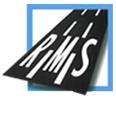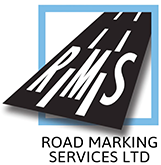 Add My Company
Add My Company
Sign In
What Do the Different Road Markings Mean?
25-08-2016

Motorists are provided with a high amount of visual feedback and information when out on the road. Much of this is presented in the form of road markings and, depending on the road structure and layout, you may be presented with a number of different markings in quick succession.
This month, we’re taking a look at the meanings of the different road markings you are likely to see on your travels, providing you with a better understanding of the nature of road markings and why it’s always wise to pay them close attention.
Along the carriageway
Starting simple: most single carriageways will separate lanes of traffic travelling in opposite directions with central broken white lines. Sometimes these lines will lengthen, the gap between them growing shorter, to warn drivers of upcoming hazards – closed junctions or bends, for example.
To separate traffic travelling in the same direction, short lane lines will be used. These lines are noticeably shorter than central broken lines, with a much larger gap between dashes.
When double white lines are present, you should pay attention to whether the line nearest to you is broken or solid. If broken, you are permitted to cross the line to overtake – assuming you can perform the manoeuvre in time to return to your side of the road before the broken line turns solid.
If the line on your side of the road is solid, it is illegal to straddle or cross the line except in certain conditions, which are:
TO ENTER SIDE ROAD OR PROPERTY,TO PASS A STATIONARY VEHICLE,TO OVERTAKE A CYCLIST, HORSES OR ROADWORK VEHICLES (IF THEY ARE TRAVELLING AT 10MPH OR LESS).
These manoeuvres must only be performed if the road is clear and it is safe to do so.
Junction markings
Give way: Busy junctions can be filled with many road markings. Commonly, ‘give way’ markings will be present, taking the form of an upside down triangle and thick, broken double white lines across the lane to alert motorists to give way to traffic on adjoining busier roads. These markings will usually be accompanied by relevant road signs.
Where stop signs or traffic lights are present, a thick, continuous white line will be marked across the lane, indicating to drivers that they must stop. Legally, drivers must stop before the stop line if the traffic light is red or if a stop sign is present.
There may also be an advanced cyclist only stop line – clearly marked with the same colour and iconography as a bike lane. Motorists should allow cyclists to pass ahead at these junctions.
Box junctions may be in place in busy junctions. These are marked as a yellow criss-cross grid, and come with their own rules:
YOU MUST NOT ENTER THE GRID UNTIL YOUR EXIT IS CLEAR (AND THERE IS ENOUGH ROOM TO FULLY PASS THE GRID ITSELF)YOU CAN ENTER AND STOP IN THE BOX JUNCTION IF TURNING RIGHT, BUT BLOCKED BY ONCOMING TRAFFIC OR OTHER VEHICLES ALSO TURNING RIGHT
When the rules of box junctions are obeyed, traffic is allowed to flow much more efficiently.
Zigzag lines
White zigzag lines are found on either side of pedestrian crossings, and indicate that parking and overtaking is prohibited, providing an unobstructed view for pedestrians.
Yellow zigzag lines are commonly seen outside of schools, hospitals, fire station and police station entrances, indicating that parking and waiting is strictly prohibited. Yellow zigzag lines outside of schools are an important safety feature, as they allow children a clear, unobstructed view of traffic.
Yellow lines
Yellow lines come in a few forms, and will inform motorists of waiting restrictions. Yellow lines will be marked along the side of the carriageway, or on the kerb, and mean the following:
SINGLE YELLOW LINE – INDICATES THAT PARKING OR WAITING IS ONLY ALLOWED AT CERTAIN TIMES. THESE TIMES WILL BE DETAILED ON NEARBY SIGNS. PICKING UP OR DROPPING OFF PASSENGERS IS GENERALLY PERMITTED, AS IS STOPPING TO LOAD OR UNLOAD.
DOUBLE YELLOW LINES – INDICATES THAT PARKING OR WAITING IS NOT ALLOWED AT ANY TIME. LIKE SINGLE YELLOW LINES, DROPPING OFF/PICKING UP PASSENGERS IS USUALLY PERMITTED, AS IS LOADING AND UNLOADING – UNLESS LOADING RESTRICTIONS ARE ALSO IN PLACE.
YELLOW KERB MARKINGS – THESE INDICATE LOADING RESTRICTIONS. TWO LINES AT REGULAR INTERVALS ALONG THE KERB MEANS NO LOADING AT ANY TIME. SINGLE LINES WILL ALLOW LOADING DURING CERTAIN TIMES – DETAILED VIA ACCOMPANYING SIGNS.
Other common markings
There are many other markings to help guide motorists on their journey. These mainly come in the form of thick, painted white markings in different lanes. These can be arrows, pointing left, right, straight – or a combination – to indicate which lane allows access to where. Phrases such as ‘Slow’, ‘Keep Clear’ or names of specific roads/areas may also be painted to keep drivers informed of the correct routes to take.
Road markings such as these should always be simple, easy to read and large enough to spot in advance. Road markings of all kinds are vital to the swift and safe flow of traffic across the country, offering critical information to drivers and pedestrians while keeping all road users safe.
It’s important to refresh and renew old road markings so they are constantly visible for all, and through the hard work of professional road marking experts, this can be achieved.
Road Marking Services are one of the UK’s premier road marking contractors with over 25 years of experience in the industry. We provide efficient, professional and high quality services across the UK, utilising the latest technologies and finest materials to ensure the best possible road markings every time. For more information on our services, don’t hesitate to get in touch today.
For more information on What Do the Different Road Markings Mean? talk to Road Marking Services
Enquire Now
List your company on FindTheNeedle.

